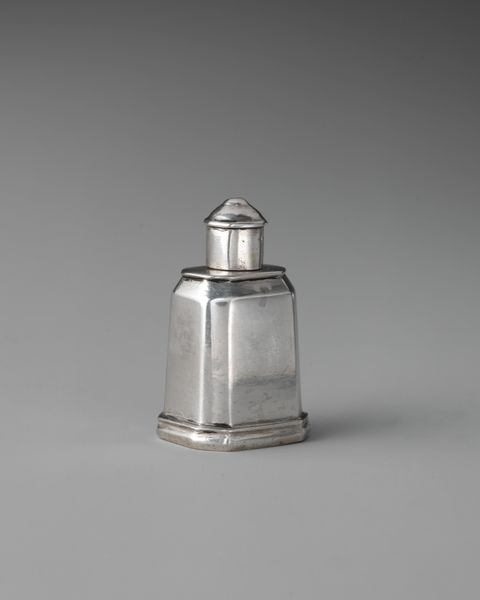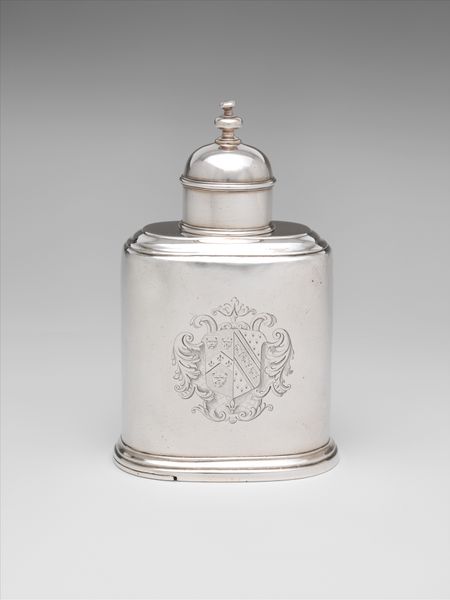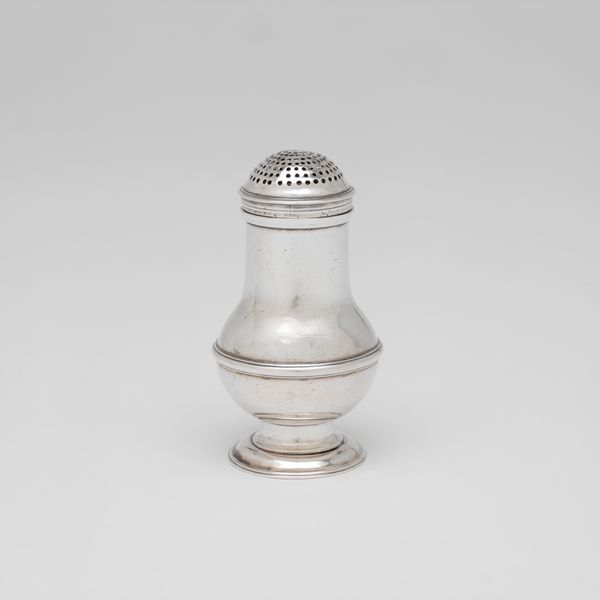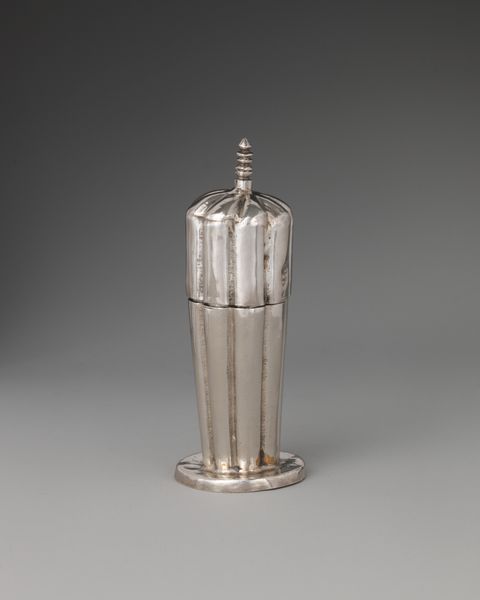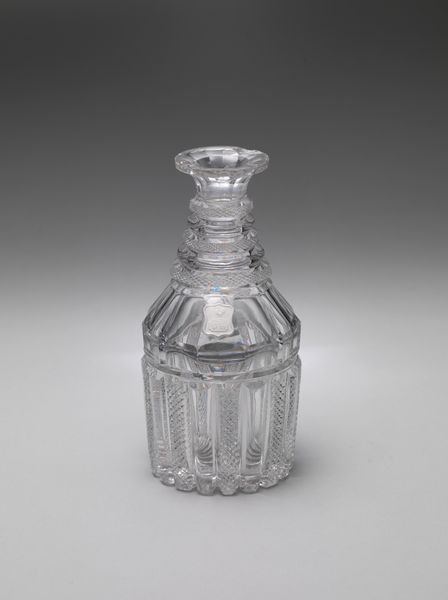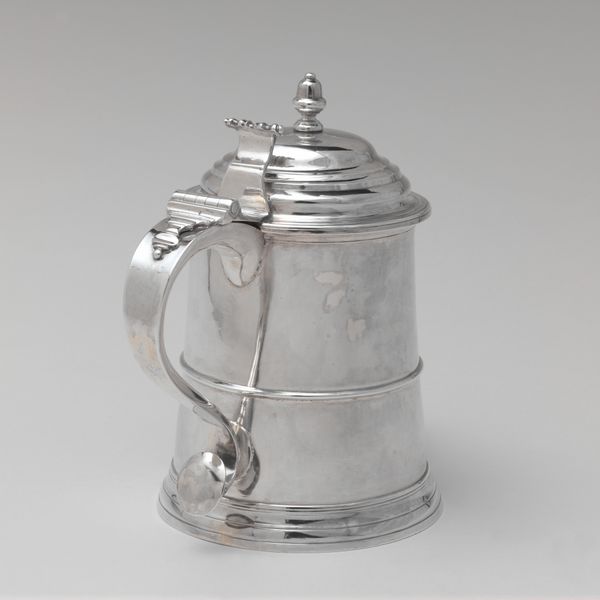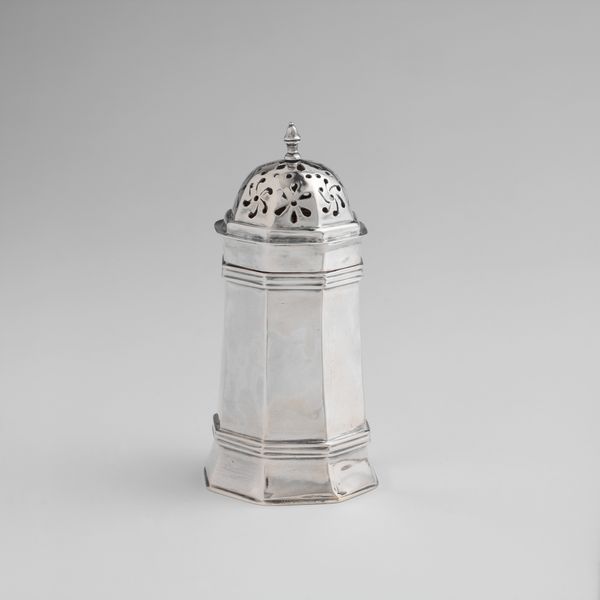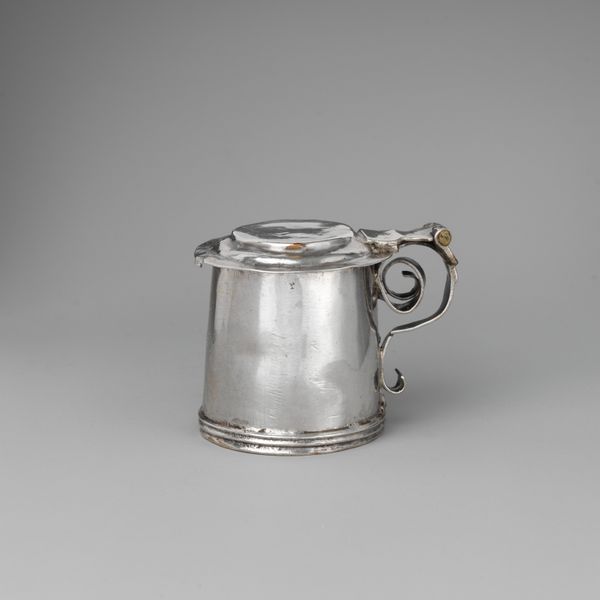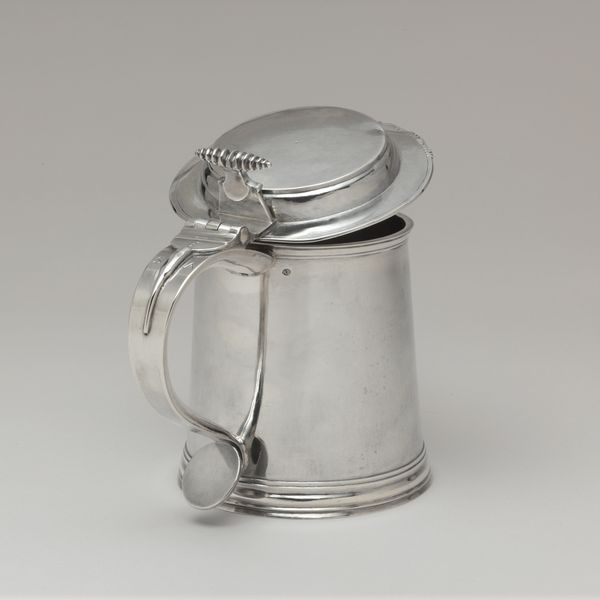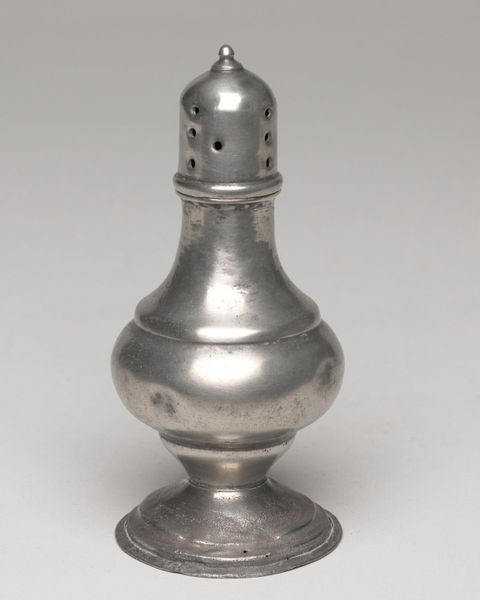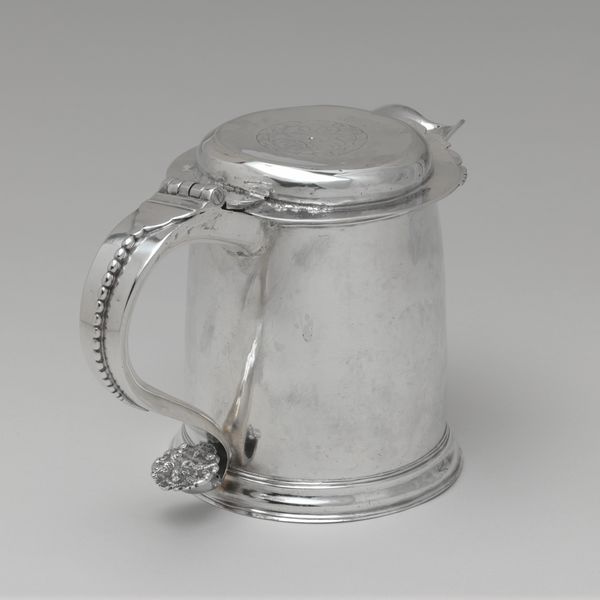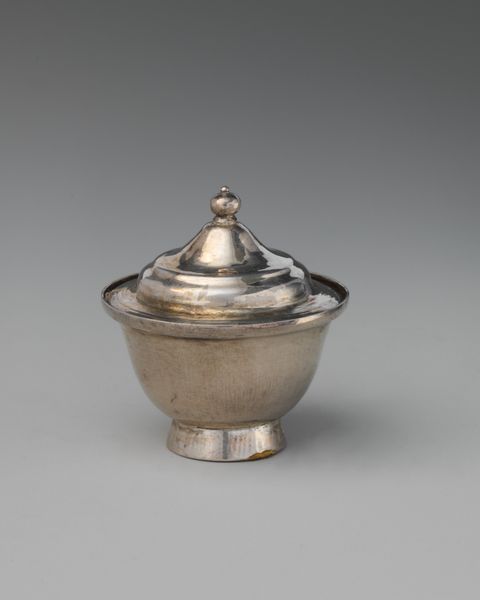
silver, sculpture
#
silver
#
baroque
#
sculpture
#
decorative-art
Dimensions: Height: 1 7/16 in. (3.7 cm)
Copyright: Public Domain
Curator: This exquisitely crafted piece is a miniature silver tea caddy, dating from 1715 to 1735, currently residing at the Metropolitan Museum of Art. Editor: My first thought is of quiet luxury. The soft gleam of the silver, the miniature size… It suggests a very intimate, controlled experience of tea. Curator: Indeed. The emergence of tea culture in the 18th century was intrinsically linked to social status. Silver tea caddies like these became important indicators of wealth and refinement in elite social circles. Their presence marked participation in an exclusive social ritual. Editor: Exactly. And thinking about the material – silver was, and still is, a commodity. Crafting this tiny vessel represents considerable labor. Where did the silver come from? Who mined it, and how were they compensated? These are crucial considerations that we sometimes forget when appreciating decorative objects. Curator: Certainly. And the fact that it’s miniature suggests, perhaps, individual portions, reinforcing the notion of controlled access and personalized experience. Owning such an object provided access to the rituals of polite society and communicated something about the owner’s self-image and aspirations. Editor: The silversmith’s skill, too, shouldn't be overlooked. We see a mastery of the material that elevates mere functionality into art. The shaping, the polishing… each step is a testament to a craft steeped in tradition. Curator: It truly does function as both art and social artifact, encapsulating complex networks of trade, labor, and cultural aspiration. What began as a means to contain tea leaves also became a vessel to store and perform class identity. Editor: Right, by viewing the caddy in this way, we acknowledge both the aesthetic refinement of its design and the realities of its making and social deployment. A tiny object holding quite complex stories. Curator: It reveals so much about the socio-political climate of its time. And I feel now a deeper appreciation for this caddy’s place in shaping identity through tea and its accouterments. Editor: And to appreciate fully, we should continue tracing this caddy back to the extraction, craft and circulation, the larger systems from which this treasure comes.
Comments
No comments
Be the first to comment and join the conversation on the ultimate creative platform.
